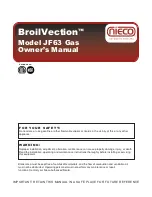
18
Installation and maintenance instructions ecoTEC exclusive 0020193966_04
7.6
Connecting the heating flow and heating
return
1
▶
Establish the heating connections
(1)
in accordance with
the relevant standards.
7.7
Installing the drain pipe on the expansion
relief valve
1.
Install the drain pipe for the expansion relief valve in
such a way that it does not interfere with the removal
and fitting of the lower section of the condensate si-
phon.
1
2.
Install the drain pipe as shown (do not shorten).
3.
Make sure that the end of the pipe is visible.
4.
Ensure that discharged water or steam cannot cause
injury to persons or damage to electronic components.
5.
Ensure the discharge pipe work is installed, routed and
terminated correctly to minimise the risk of freezing up.
7.8
Connecting the condensate discharge pipe
Danger!
Risk of death from escaping flue gases!
The condensate siphon's condensate dis-
charge pipe must not be connected to waste-
water pipework because, otherwise, the in-
ternal condensate siphon may be drained
fully and flue gas may escape.
▶
Do not connect the condensate discharge
pipe tightly to the waste-water pipework.
A
2
3
1
The product is equipped with a condensate siphon
(1)
. (The
filling height is 145 mm). The condensate siphon collects the
condensate that has formed in a vessel with a volumetric ca-
pacity of approx. 200 ml and allows the contents to intermit-
tently drain into the drain pipe. This minimises the risk of the
drain pipe freezing. Fitting an extra trap may cause the boiler
siphon to work incorrectly.
▶
Follow the instructions listed here and observe directives
and local regulations on condensed water discharge.
▶
If you cannot guarantee that the materials from which the
condensate discharge pipe is made are suitable, install a
system to neutralise the condensate.
▶
Connect the condensate discharge
(2)
to a condensate
discharge pipe
(3)
that has a minimum internal diameter
of 19 mm (30 mm internal diameter for all externally in-
stalled pipes) and is made from an acid-resistant material
(e.g. plastic overflow pipe).
–
The condensate discharge pipework must have
a continuous fall (45 mm per metre) and should
whenever possible terminate at a suitable discharge
point within the heated envelope of the building
that will remain frost free under long periods of low
external temperatures.
Note
Ensure that the connection between the con-
densate discharge pipe and the drain hose is
not air-tight.
▶
During installation remove all burs from inside of cut pipe
work and avoid excessive adhesive which may trap small
pockets of water close to the pipe wall which can freeze
and build into a larger ice plug.
▶
As with other pipe work insulate the condensate dis-
charge pipe to minimise any risk of freezing and beware
when crossing cavities that the fall is maintained and the
pipe sleeved.
▶
Ensure that the condensate discharge pipe terminates in
a suitable location. Further information can be obtained
from BS 6798 Specification for installation of gas
–
fired
boilers of rated input not exceeding 70 kW net.
▶
Leave an installation space of at least 300 mm beneath
the condensate siphon.
7.8.1
Condensate discharge systems
The condensate is discharged periodically in ‘slugs’ by si-
phonic action. It is not necessary to provide extra traps in the
















































